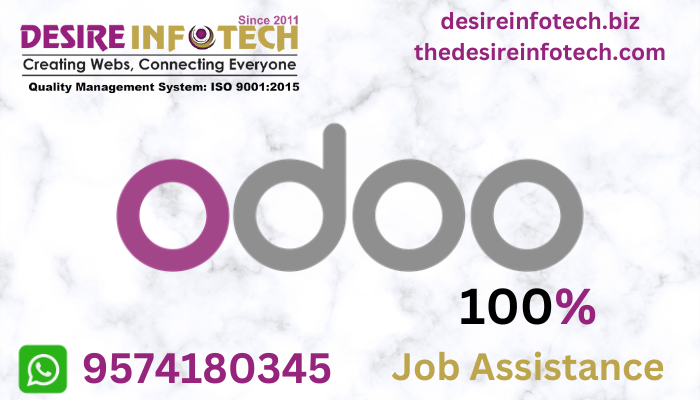- contact@desireinfotech.biz
- Phone: +91 95741 80345
- Mon - Sat : 09.00 AM - 06.00 PM



The history of the iPhone line of phones begins with a direction from Steve Jobs to Apple Inc.'s engineers, whereby he asked them to investigate touchscreens and a tablet computer, which later came to fruition with the iPad. Also, many have noted the device's similarities to Apple's previous touch-screen portable device, the Newton MessagePad. Like the Newton, the iPhone is nearly all screen. Its form factor is credited to Apple's head of design, Jonathan Ive.In April 2003 at the "All Things Digital" executive conference, Jobs expressed his belief that tablet PCs and traditional PDAs were not good choices as high-demand markets for Apple to enter, despite many requests made to him that Apple create another PDA.
He did believe that cell phones were going to become important devices for portable information access, and that what cell phones needed to have was excellent synchronization software. At the time, instead of focusing on a follow-up to their Newton PDA, Jobs had Apple put its energies into the iPod, and the iTunes software (which can be used to synchronize content with iPod devices), released January 2001. On September 7, 2005, Apple and Motorola released the ROKR E1, the first mobile phone to use iTunes. Jobs was unhappy with the ROKR, feeling that having to compromise with a non-Apple designer (Motorola) prevented Apple from designing the phone they wanted to make.[14] In September 2006, Apple discontinued support for the ROKR and released a version of iTunes that included references to an as-yet unknown mobile phone that could display pictures and video.
On January 9, 2007 Steve Jobs announced the iPhone at the Macworld convention, receiving substantial media attention, and that it would be released later that year. On June 29, 2007 the first iPhone was released.
On June 11, 2007 announced at the Apple's Worldwide Developers Conference that the iPhone would support third-party applications using the Safari engine on the device. Third parties would create the Web 2.0 applications and users would access them via the internet. Such applications appeared even before the release of the iPhone; the first being "OneTrip", a program meant to keep track of the user's shopping list. On June 29, 2007, Apple released version 7.3 of iTunes to coincide with the release of the iPhone. This release contains support for iPhone service activation and syncing.
According to The Wall Street Journal, the iPhone is manufactured on contract in the Shenzhen factory of the Taiwanese company Hon Hai (also known as Foxconn).
(These all detail is taken from Wikipedia)
After a year and a half of negotiations, Steve Jobs reached an agreement with the wireless division of the telecomm giant AT&T (Cingular at the time) to be the iPhone's carrier. In return for five years of exclusivity, roughly 10 percent of iPhone sales in AT&T stores, and a thin slice of Apple's iTunes revenue, AT&T granted Apple roughly $10 a month from every iPhone customer's AT&T bill. In return, consumers were unable to use any other carrier without heavily modifying their device.Apple retained complete control over the design, manufacturing, and marketing of the iPhone.
Since some customers were trying to jailbreak their iPhone to avoid the AT&T network, AT&T decided to charge consumers if they were to leave the network. This caused complaints among many consumers, as they were forced to pay an additional early termination fee of $175 to end the contract, and the device would remained locked. Other companies such as Google complained that tying encourages a more closed access based wireless service
(These all detail is taken from Wikipedia)
INTRODUCTION ● TO OBJECTIVE C AND XCODE
● Introduction to iPhone development, iPhone SDK and Xcode
● Introduction to Objective C – part 1
● Introduction to Objective C – part 2
● Making your first iPhone App
COCOA AND MVC IN IOS
● Interface Builder, iPhone Simulator and Debugger Properties, Protocols and Categories in Cocoa
● Important Cocoa classes and Frame works
● Basic Interaction handling – A touch app in iPhone
● Understanding MVC architecture
CONTROLS AND GESTURES IN IOS
● Introduction to Controls
● Advance Controls in iPhone
● UISegmented Controls
● Understanding views and view hierarchy(super class and subclass)
Handling Gesture and swipe - UITouch ,UI Responder and UIEvent Class
CONTROLLERS AND MEMORY MANAGEMENT IN IOS
● Understanding View Controllers in detail
● Working with Switch, Slider and Buttons
● Understanding Page Controls and Date Pickers
ADVANCE CONTROLLERS PROGRAMMING IN IOS
● Understanding the use of Tab bars
● Understanding Pickers
● Working with Progress view, scroll view and text view
● Working with Web view and Alert view
INTRODUCTION TO TABLE VIEW IN IOS
● Understanding Navigation Controller in iPhone Working with Table view and mixed content Grouped
● Indexed and dynamic table view Custom Table view
● Advanced Table view and Other operations in Table view
PERSISTENCE IN IOS
● Introduction to Offsite Optimization
● File handling in iPhone(Directory and file creations, saving and retrieval of data)
● Using SQLlite in iPhone
● Working with Persistence using property list
● Understanding the use of Accelerometer
ADVANCE GRAPHICS AND TOUCH IN IOS
● Introduction to quartz – using colors, polygon lines and curves
● Understanding Core Location
● Using Multitouch – Explain responder chain
MULTIMEDIA AND INTERNATIONALIZATION IN IOS
● Playing back sound, audio and video in iPhone
● Understanding of Core Data
● Using camera in iPhone
● Internationalization
OPENGL ES PROGRAMMING AND NETWORKING
● Introduction to OpenGL – ES – Simple example
● OpenGL ES – Animation
● Using Networking API s
● Working with address book
ADVANCE FEATURES IN IOS
● Using iCloud Storage
● Introduction to Core Image
● Using Notification center
● Using Twitter on iPhone
● Integrating Social apps in to iPhone/iPad apps
QUALITY ASSURANCE IN IOS APPLICATION
● Debugging the App and finding Memory leaks
● Performance tuning of an Application
● Debugging in Xcode
● Unit Testing Applications
SUBMITTING IOS APPLICATION TO APPSTORE
● Creating Provisioning profile
● Key Chain Access
● Accessing device UDID
● Launching the App in the APP store